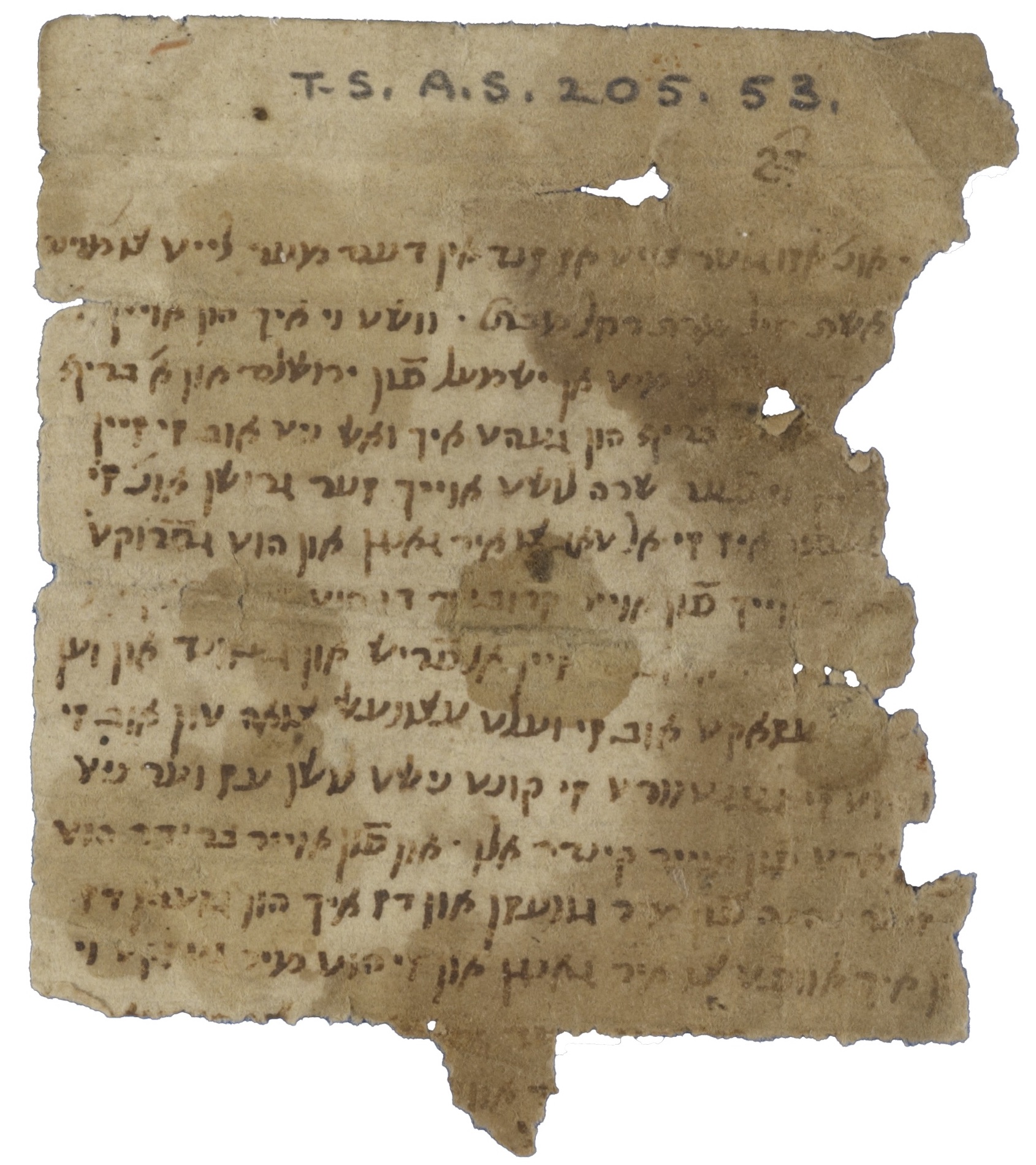Throwback Thursday: Rachel’s Missing Letters?

T-S AS 205.53: One of three newly discovered fragments of a letter written in an early form of Yiddish to Rachel Zusman in Jerusalem. The letter mentions sensitive health problems: ub zi velt etsvos tsoye tun... zi hot zi geentfert zi kunt nisht esn.
Thu 21 Oct 2021
Our Throwback Thursday this week is taken from issue 58 of the printed edition of Genizah Fragments, published in October 2009, by Esther-Miriam Wagner.
Although the amount of Yiddish material in the Cambridge Genizah collections is very small in comparison with that written in Judaeo-Arabic, Hebrew, Arabic, Aramaic or even Ladino, the few existing fragments are rather extraordinary. The most important literary example is the 14th-century Dukus Horant, a narrative poem from the Middle High German epic tradition, featuring heroes such as Kudrun, Hagen and Hilde. Significantly, this text has no German analogue and presents, therefore, an invaluable source for the study of medieval German literature. The non-literary Yiddish fragments are of comparable importance. The Taylor-Schechter Collection holds a total of five letters from the 1560s, written by a woman living in Jerusalem called Rachel Zusman. Four of the letters were sent to her son Moshe in Cairo and one was meant to be forwarded to a Rabbi Jacob Katz in Venice. They are among the earliest extant examples of Yiddish letter-writing, preceded only by two other documents: a so-called “Kassiber” (secret message) from 1478 preserved in an archive in Munich (incidentally, the German word “Kassiber” for this kind of genre is actually a loanword from the Hebrew root ktb in Yiddish kessav), and a letter from the year 1533, written by a woman in the Balkans (two further Yiddish letters from the same collection in Vienna are now missing). The Yiddish letters from the Genizah thus hold vital clues to the early history of the Yiddish language and are a most important source for the study of the emergence of Yiddish as it is known today. Considering the significance of these few early examples, I was astonished and delighted when I came across four more fragments of Yiddish letters in the Additional Series, after my colleague Dotan Arad first alerted me to the existence of uncatalogued Yiddish material in the Genizah Collection. The handwriting seemed very familiar and so it was no surprise to discover that the first of these fragments is actually the missing right-hand part of a known letter. Needless to say, a search is now ongoing for what is still missing from the left-hand side, which we will hopefully locate in the course of continued cataloguing. The other three fragments together form another letter to Rachel Zusman from an unidentified man (as evidenced by the remark “my wife sends you greetings”) who calls her his “dear friend”. On verso there is a short note, possibly in the hand of Rachel’s son, who apparently had been forwarding Rachel’s letters on to Venice. Therefore, there is a good chance that this might be a reply from Rabbi Jacob Katz, again sent to the son Moshe, who would forward it on to his mother. A common motif in Rachel’s writing is her complaint that she receives no letters, and it is a relief to see that this might not have been always the case.
Add new comment